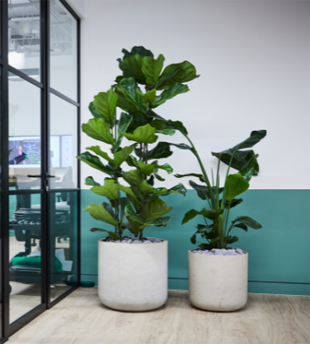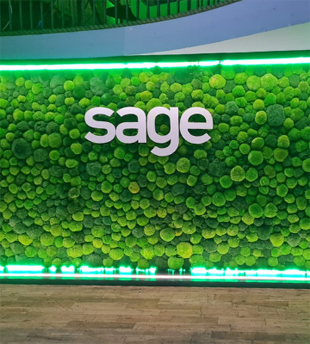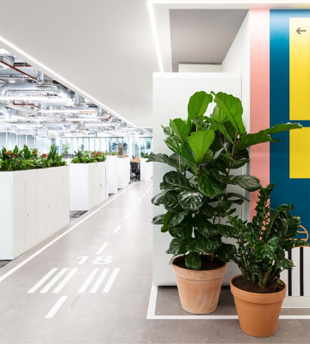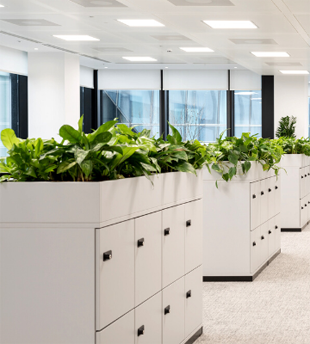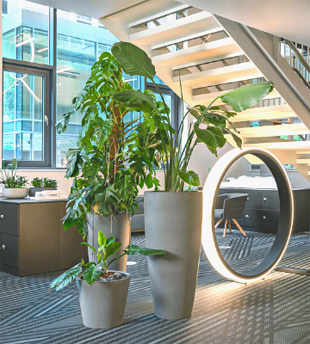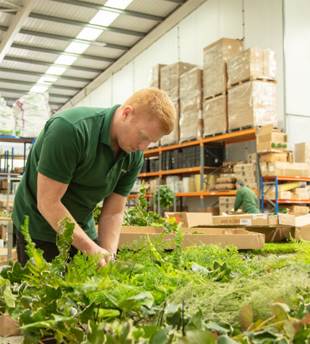Toggle Nav
How Many Plants Should You Have In Your Office? (Guest Post)

Biophilic design has become a popular part of office design and office fit outs in recent years, implementing green plants and fresh flowers to improve staff well-being, air quality and noise suppression.
This article will help bridge the gap between the idea of adding plants to your workplace and its execution. This will help you know how many plants you should have in your office to gain the full benefits of biophilic design.
What is the best number of plants to have per room / office space and why?
For many, a working day is spent inside, so it’s important to bring the health and well-being advantages of the outside world into the workplace to aid productivity levels and general comfort. The optimum number of plants to have per room / office mainly depends on the size of the workspace and the amount of natural light available.
With this in mind, it’s recommended that you have one medium-sized plant per every 100 square feet of space. This is because you don’t want to overwhelm the room with foliage, but you do want to make a difference and fully benefit from their health and wellness properties.
It’s worth noting here that having too many plants in a small indoor space can increase the humidity levels which, in turn, can cause mould growth and impact physical health.
What would the best type of plant be for my office?
Depending on the purpose or aesthetic you’d like to achieve in your office, there are a plethora of plants to choose from. When searching for a plant, it’s worth opting for one that will thrive in almost any amount of light as office environments can vary significantly. Maintenance and space are also important factors, so it’s wise to choose plants that don’t require regular watering or take up a lot of space.
Here are our top five choices:
- Cacti. These are incredibly low maintenance - they thrive in light locations and require minimal water, so just pop them in a sunny spot on your desk and watch them flower, being careful to hold their pot to avoid their sharp needles!
- Aloe vera plant. This plant is the perfect option if you have managed to get a spot at the coveted window seat. Simply position the plant in the light and water it every two - three weeks.
- Money tree. For those looking to improve the feng shui in their office, the money tree is said to symbolise positivity, good luck and prosperity. It requires bright, indirect sunlight and should be watered about once a week.
- Modern bamboo. In keeping with a Japanese garden-inspired theme, a modern bamboo plant is considered a symbol of good luck and fortune. All that is required is to position the plant in a spot that gets moderate or indirect sunlight and water it when the soil is dry.
- Dracaena. For more of a statement plant, the exotic appearance of the dracaena provides a summery, stylish addition to the office space. In terms of maintenance, they should only require watering once a week, or even biweekly, and can maintain their distinctive appearance in lower light.
Why is it important to include plants within office design?
While it’s clearly important to factor in the larger aspects of office design, such as layout, furniture and decor, careful consideration also needs to be paid to the finer details, with the inclusion of plants very much covered in this. Whether you are refurbishing your reception area or planning a complete office fit out, biophilic design provides that all-important finishing touch.
As such, it’s worth paying attention to the necessary lighting needed for the type of plants you are introducing into the space, as their positioning is key for them to thrive. Not only that, high-quality plant / living walls are a big trend within office design, providing a stylish, healthier working environment for staff and visitors alike.
As more and more businesses are placing a heavier focus on the health and wellness of their staff, the inclusion of plants within office design is a great way of achieving this. By enlisting the help of an expert, you can strategically position these plants in areas where they will be most beneficial, so you can reap the rewards of a happier, healthier workforce.

